The sight of a chubby baby with a round belly is a familiar and endearing image for many. However, this prominent feature often raises questions among new parents and caregivers regarding its implications for health and development. The apparent paunchiness of infants, typically observed during the first year of life, is a natural aspect of growth that warrants a closer examination.
This article aims to elucidate the physiological and developmental factors contributing to the characteristic big bellies of babies. By exploring the intricacies of infant anatomy, nutritional requirements, and metabolic processes, we can better understand why this feature is not only common but also a vital indicator of healthy growth during early childhood. Through this exploration, we seek to demystify the perception surrounding infant abdominal size and to affirm its role within the broader context of human development.
Understanding Infant Anatomy and Physiology
Understanding the distinct features of infant anatomy and physiology is crucial in deciphering the reasons behind the seemingly disproportionate size of a baby’s belly. Infants are born with a relatively larger abdomen compared to their overall body size, a characteristic that is both normal and expected. This prominence can be attributed to several anatomical factors, including:
-
- Development of Organs: Infants’ organs, especially the liver and stomach, are larger in proportion to their small body size, contributing to the rounded appearance of their bellies.
-
- Body Fat Distribution: Infants have a higher percentage of body fat, which is essential for growth and energy reserves, resulting in a softer, fuller abdomen.
-
- Muscle Tone: Infants have less abdominal muscle tone, which means less support for the abdominal wall, further accentuating the belly’s roundness.
Moreover, during the first year of life, rapid growth occurs, and changes in body proportions can lead to variations in belly size. It is also important to consider the physiological processes at play. For instance:
| Factor | Impact on Belly Size |
|---|---|
| Feeding Patterns | Frequent feedings contribute to a fuller stomach, giving the belly a more prominent appearance. |
| Digestive Function | Immature digestive systems can lead to bloating, further enhancing a rounded appearance. |
| Hydration Levels | Variability in hydration can affect abdominal distension, especially after feedings. |
Understanding these factors helps to demystify the big belly phenomenon in infants, reassuring caregivers that this is a normal part of healthy growth and development.
The Role of Nutrition in Developmental Growth
The intricate relationship between nutrition and developmental growth is pivotal in a child’s early years. During infancy, the body experiences rapid growth and development, making **nutritional intake** essential for optimal physical and cognitive progression. A balanced diet rich in essential nutrients, vitamins, and minerals supports the formation of tissues, organs, and the brain. Notably, the recommended nutrients for infants include:
-
- Proteins: Crucial for cell growth and repair.
-
- Fats: Important for brain development and energy.
-
- Carbohydrates: The primary energy source for active growth.
-
- Vitamins and Minerals: Necessary for various biochemical functions.
Nutritional deficiencies can lead to stunted growth or developmental delays, impacting both physical stature and cognitive abilities. A balanced diet not only ensures adequate growth patterns but also contributes to **healthy metabolism**. Understanding the dynamics of infant nutrition highlights the importance of monitoring dietary practices during this pivotal growth phase. The following table exemplifies key nutrients and their contributions to growth:
| Nutrient | Function | Sources |
|---|---|---|
| Iron | Supports cognitive development | Meat, beans, fortified cereals |
| Calcium | Strengthens bones and teeth | Dairy products, leafy greens |
| Vitamin D | Enhances calcium absorption | Sunlight, fortified foods |
Common Concerns: Distinguishing Normal from Abnormal
When it comes to assessing a baby’s growth and development, one of the most common observations is their proportionally large belly. This characteristic is often a source of concern for new parents who may wonder if their child’s physical appearance is a sign of health issues. However, it is essential to understand that the development of a prominent abdomen in infants is typically a normal aspect of early growth. Various factors contribute to this phenomenon, including physiological reasons, such as the infant’s organ development, and genetic predispositions.
In distinguishing between normal and abnormal abdominal growth, parents should consider several key indicators. These include:
-
- Age and Developmental Stage: Infants naturally have a round belly due to their soft abdominal muscles and the positioning of internal organs.
-
- Feeding Patterns: If the baby is feeding well, gaining weight appropriately, and showing healthy developmental milestones, a larger belly is generally not a concern.
-
- Behavioral Signs: If the baby is active, alert, and content, this further supports normal growth.
However, there are situations in which abnormal swelling may occur. If a parent notices accompanying symptoms such as persistent vomiting, excessive fussiness, or significant changes in eating habits, they should consult a healthcare professional. Recognizing these signs can assist parents in differentiating between commonplace growth patterns and potential health issues.
Practical Guidance for Caregivers and Parents
Understanding the physiological reasons behind the characteristic roundness of a baby’s belly can help caregivers and parents to respond more effectively to their child’s needs. During the first year of life, infants experience rapid growth and development, which is a crucial time for establishing healthy patterns. It’s important to recognize that a big belly is often a normal aspect of this growth phase due to several factors, including the presence of immature digestive systems and natural fat deposits. Caregivers should be aware of the following aspects:
-
- Digestive Development: Young infants have underdeveloped digestive systems that may cause bloating and a protruding abdomen.
-
- Fat Distribution: A baby’s body naturally accumulates a layer of subcutaneous fat, particularly around the abdomen, which aids in energy storage and insulation.
-
- Feeding Practices: Overfeeding or sensitivity to certain foods can lead to temporary distension.
To support healthy growth patterns in infants, caregivers can adopt some practical measures. Establishing a consistent feeding schedule and keeping an eye on the baby’s reactions to different foods can make a significant difference. Additionally, regular pediatric check-ups are essential for monitoring growth milestones. Ultimately, understanding these concepts can alleviate concerns and empower caregivers with knowledge regarding what constitutes normal development. Below are some recommended practices:
| Practice | Description |
|---|---|
| Feed Responsively | Watch for hunger cues and avoid forcing feedings. |
| Evaluate Feeding Techniques | Use proper burping techniques to minimize gas buildup. |
| Monitor Growth | Keep track of your baby’s growth patterns using standard growth charts. |
Insights and Conclusions
the phenomenon of babies possessing notably large bellies is a multifaceted aspect of infant development that reflects both normal physiological growth and the complexities of early nutrition. As we have explored, the distinct abdominal protrusion in infants can be attributed to several factors, including the anatomical structure of their developing bodies, the composition of their diets, and the natural processes of digestion and metabolism. Understanding this characteristic not only reassures parents about their infants’ health but also emphasizes the importance of monitoring their growth patterns in context.
As infants continue to mature, their body proportions will gradually shift towards those observed in older children and adults, rendering the prominent belly a temporary feature of early life. This transition underscores the dynamic nature of human development and the various stages of growth that every individual undergoes. By fostering an informed perspective on such physiological traits, caregivers can better support their babies’ health and well-being, ultimately contributing to a more nuanced understanding of childhood development.


